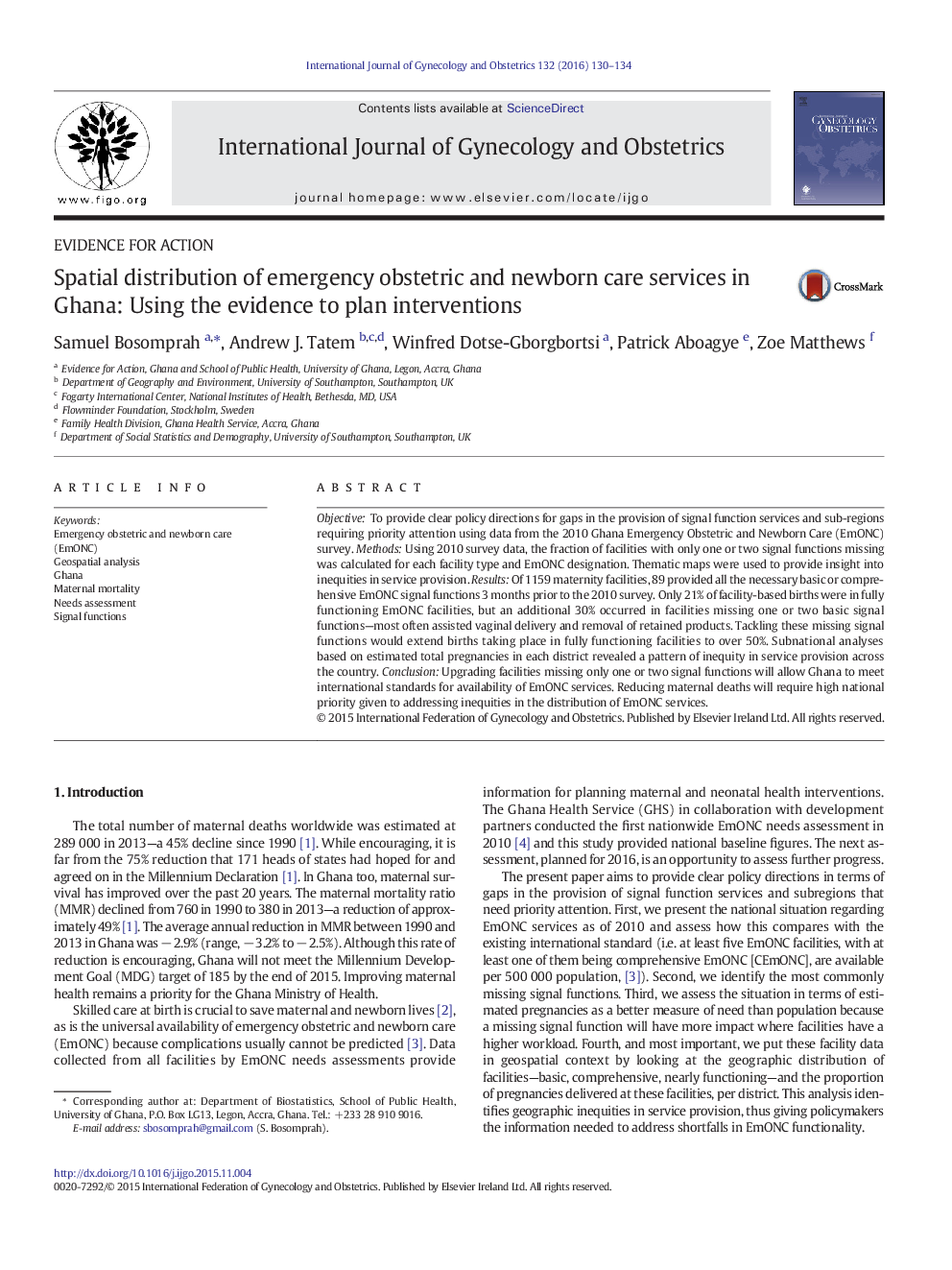| کد مقاله | کد نشریه | سال انتشار | مقاله انگلیسی | نسخه تمام متن |
|---|---|---|---|---|
| 3952283 | 1600298 | 2016 | 5 صفحه PDF | دانلود رایگان |
ObjectiveTo provide clear policy directions for gaps in the provision of signal function services and sub-regions requiring priority attention using data from the 2010 Ghana Emergency Obstetric and Newborn Care (EmONC) survey.MethodsUsing 2010 survey data, the fraction of facilities with only one or two signal functions missing was calculated for each facility type and EmONC designation. Thematic maps were used to provide insight into inequities in service provision.ResultsOf 1159 maternity facilities, 89 provided all the necessary basic or comprehensive EmONC signal functions 3 months prior to the 2010 survey. Only 21% of facility-based births were in fully functioning EmONC facilities, but an additional 30% occurred in facilities missing one or two basic signal functions—most often assisted vaginal delivery and removal of retained products. Tackling these missing signal functions would extend births taking place in fully functioning facilities to over 50%. Subnational analyses based on estimated total pregnancies in each district revealed a pattern of inequity in service provision across the country.ConclusionUpgrading facilities missing only one or two signal functions will allow Ghana to meet international standards for availability of EmONC services. Reducing maternal deaths will require high national priority given to addressing inequities in the distribution of EmONC services.
Journal: International Journal of Gynecology & Obstetrics - Volume 132, Issue 1, January 2016, Pages 130–134
